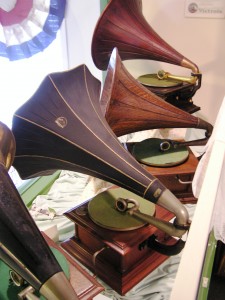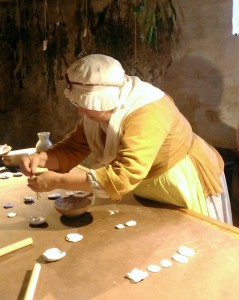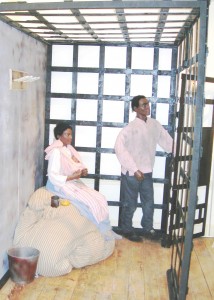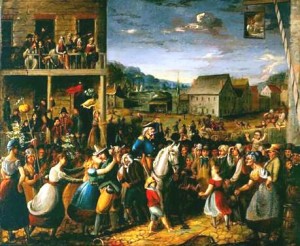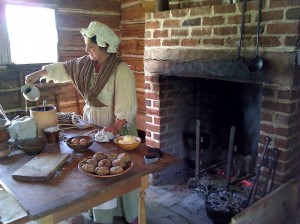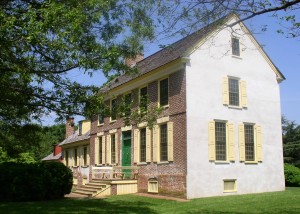The Division of Historical and Cultural Affairs will be sponsoring 16 special events during the month of July 2014 at the six museums of the state of Delaware. A full schedule is included below. With the exception of DeBraak tours, all programs are free and open to the public. For additional information, call 302-744-5055.
Administered by the Division of Historical and Cultural Affairs, the state of Delaware’s six museums—the New Castle Court House Museum, the John Dickinson Plantation, the First State Heritage Park Welcome Center and Galleries, The Old State House, the Johnson Victrola Museum and the Zwaanendael Museum—tell the story of the First State’s contributions to the history and culture of the United States. Through displays, exhibits and special programs, the museums explore how the state’s distinctive physical environment, in combination with the people who came to live there, gave Delaware an identity that is different from any other place.
Delaware Division of Historical and Cultural Affairs special events, July 2014
Wednesdays, July 2, 9, 16, 23 and 30, 2014
Hands On History. Visitors will experience 18th-century history by participating in a different demonstration each week. Hands-on demonstrations will include sachet making, paper marbling, paper quilling, plantation journal-making and plaster casting. John Dickinson Plantation, 340 Kitts Hummock Road, Dover. Program 11 a.m.–2:30 p.m. Museum open 10 a.m.–3:30 p.m. 302-739-3277.
Friday and Saturday, July 4 and 5, 2014
“Stars and Stripes.” Guided tours explore some of Victor Records’ many recordings of patriotic music played on authentic Victor Talking Machines. Johnson Victrola Museum, 375 S. New St., Dover. 9 a.m.–4:30 p.m. 302-744-5055.
Friday, July 4, 2014
Independence Day program. Screenings at 11 a.m., 1 and 5 p.m. of “Thunder and Rain,” a film about Caesar Rodney’s historic ride for independence. At 2 and 4:30 p.m., the bell of The Old State House will ring in celebration of the nation’s birthday, followed immediately by site interpreters, dressed in period clothing, who will recite the Declaration of Independence aloud from the spot where the document was first read to the citizens of Dover in 1776. The Old State House, 25 The Green, Dover. Museum open 9 a.m.–6 p.m. 302-744-5055.
Friday and Saturday, July 4 and 5, 2014
“An Illegal Activity.” Utilizing the exhibit “An Illegal Activity: The Underground Railroad in Delaware” as a backdrop, guided tours will explore Delaware’s crucial role in the Underground Railroad and on two Delaware leaders who aided in this “freedom enterprise.” First State Heritage Park Welcome Center and Galleries, Delaware Public Archives building, 121 Martin Luther King Jr. Blvd., Dover. July 4—tours at 10 a.m., Noon and 4 p.m.; museum open 8 a.m.–6 p.m. July 5—tours at 10 a.m., Noon and 2 p.m.; museum open 9 a.m.–4:30 p.m. 302-744-5055.
Saturday, July 5, 2014
“Independence Day.” First Saturday in the First State program features screenings at 11 a.m., 1 and 3 p.m. of “Thunder and Rain,” a film about Caesar Rodney’s historic ride for independence. The Old State House, 25 The Green, Dover. Museum open 9 a.m.–4:30 p.m. 302-744-5055.
Mondays, July 7, 14, 21 and 28, 2014
Lecture/tour of His Majesty’s Sloop DeBraak. Explore the history of the DeBraak which was capsized and lost off the Delaware coast on May 25, 1798. Program includes a trip to the hull facility in nearby Cape Henlopen State Park for a tour of the surviving section of the ship’s hull. Zwaanendael Museum, 102 Kings Highway, Lewes. Programs at 10 a.m. and 1 p.m. Limited seating. Admission $10 in advance by reservation only through the Shop Delaware website. For additional information, call 302-645-1148.
Saturday, July 12, 2014
Demonstrations by the Thistledown Fiber Arts Guild. Program explores spinning, weaving, knitting and other fabric arts. John Dickinson Plantation, 340 Kitts Hummock Road, Dover. Program 1–3 p.m. Museum open 10 a.m.–3:30 p.m. Free admission. 302-739-3277.
Exhibits and displays, July 2014
In addition to special programming, the Division of Historical and Cultural Affairs is presenting the following exhibits and displays:
Thru July 31, 2014
“An Illegal Activity: The Underground Railroad in Delaware.” Exhibit explores the First State’s role in the Underground Railroad by showcasing Thomas Garrett and Samuel D. Burris and the actions they took in following their consciences rather than the law. Presented in partnership with the Underground Railroad Coalition of Delaware. First State Heritage Park Welcome Center and Galleries, Delaware Public Archives building, 121 Martin Luther King Jr. Blvd., Dover. Mon.–Fri., 8 a.m.–4:30 p.m. Sat., 9 a.m.–4:30 p.m. Sun., 1:30-4:30 p.m. 302-744-5055.
Ongoing
“Archaeology of the New Castle Court House.” The exhibit highlights the many phases of archaeological investigations at the New Castle Court House including artifacts representing over 300 years of continuous use of the building. New Castle Court House Museum, 211 Delaware St., New Castle. Wed.–Sat., 10 a.m.–3:30 p.m. 302-323-4453.
Ongoing
“Delaware and the War of 1812.” Exhibit examines the service and sacrifice of Delawareans of 1812 to 1815, and the important role that the state played in a conflict that helped shaped the development of the United States. Zwaanendael Museum, 102 Kings Highway, Lewes. Wed.–Sat., 10 a.m.–4:30 p.m. from Nov. 1–March 31. Tue.–Sat., 10 a.m.–4:30 p.m.; Sun., 1:30–4:30 p.m. from April 1–Oct. 31. 302-645-1148.
Ongoing
“Dress for Success: The Edwardian Gentlemen’s Wardrobe and Accessories.” Display of objects of adornment, fashion and accessories for male grooming from the time period depicted in the Downton Abbey television series. From the collections of the state of Delaware. Legislative Hall, 411 Legislative Ave., Dover. Limited visitation hours; call 302-739-9194 before planning a visit.
Ongoing
“Emeline Hawkins: Her Journey From Slavery to Freedom on the Underground Railroad.” Exhibit chronicles the compelling story of Emeline Hawkins and her family and their 1845 odyssey on the Underground Railroad from slavery in Maryland, through Delaware to freedom in Pennsylvania. New Castle Court House Museum, 211 Delaware St., New Castle. Wed.–Sat., 10 a.m.–3:30 p.m. Sun., 1:30 p.m.–4:30 p.m. 302-323-4453.
Ongoing
“A Seaborne Citizenry: The DeBraak and Its Atlantic World.” Exhibit utilizes artifacts recovered from His Majesty’s Sloop of War DeBraak, a British warship that sank off the Delaware coast on May 25, 1798 to tell the story of the vessel, its crew and the historical context within which it operated in the Atlantic World of the late 18th century. Zwaanendael Museum, 102 Kings Highway, Lewes. Wed.–Sat., 10 a.m.–4:30 p.m. from Nov. 1–March 31. Tue.–Sat., 10 a.m.–4:30 p.m.; Sun., 1:30–4:30 p.m. from April 1–Oct. 31. 302-645-1148.
Ongoing
“Simple Machines.” Exhibit demonstrating the six “simple machines”—incline ramp, screw, wedge, pulley, lever and wheel —that constitute the elementary building blocks of which all complicated machines are composed. John Dickinson Plantation, 340 Kitts Hummock Road, Dover. Wed.–Sat., 10 a.m.–3:30 p.m. 302-739-3277.
Ongoing
“Simple Pleasures: Picnic, Play and Dance.” Display of original Edwardian and roaring 20s fashions that reflect the spirit of the liberated “modern” woman as depicted in the Downton Abbey television series. From the collections of the state of Delaware. The Old State House, 25 The Green, Dover. Mon.–Sat., 9 a.m.–4:30 p.m. Sun., 1:30–4:30 p.m. 302-744-5055.
-End-
Contact:
Jim Yurasek
Delaware Division of Historical and Cultural Affairs
Phone: 302-736-7413
E-mail: Jim.Yurasek@delaware.gov
Web: http://history.delaware.gov
